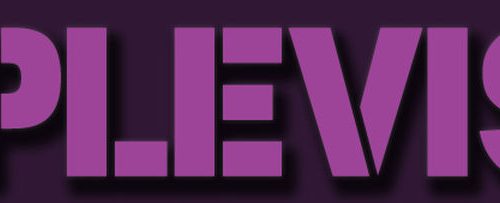Overcoming Anxiety as a Classroom Assistant
When I was doing my GCSE’s, I had an English teacher that told me that I had the potential to do anything. She inspired me to perform my best throughout my exams up until I finished my A-Levels and with her help, I discovered my passion for art and literature. From this, I knew that becoming a teacher was what I wanted to do because I wanted to inspire students to discover their love for art and literature similar to how my teacher inspired me. However, as I am nearing the end of my degree, I am starting to realise how important this year really is for me as I start to make the transition from student to teacher as I secure a placement in a secondary school.

In this blog, I will use Boud et al’s Model of Reflection (1985) to critically analyse my experience in starting a placement as a classroom assistant and the ways in which I can use this model of reflection to redirect my negative feelings throughout my experience in placement.
What is reflective thinking and when can it be used?
Reflective thinking is an important feature of our consciousness as we reflect on mostly everything that we do on a daily basis. For example, If I am copying down notes in a lecture, not only will I have to read these notes and learn new information, but I will also have to reflect back on my previous assignments and identify my areas of weakness to try and further strengthen these weaknesses for any future assignments.
Boud Model of Reflection (1985)
Boud et al’s model (p. 20) has three different stages.
1: Experience – Behaviour, ideas, and feelings.
2: Reflection – Returning to the experience, attending to feelings, and re-evaluating the experience.
3: Outcomes – New perspectives on the experience, change in behaviour, and commitment to action.

Experience
When preparing for my first day as a classroom assistant, I knew that I wanted to be equipped with all the knowledge necessary in this job position so I researched online about the ways in which I could prepare for my first day. With this research, I started to learn about the importance of understanding a child’s behaviours and academic development. As excited as I was, the more research that I carried out caused me to panic more as I started to realise that there is a lot of different matters to consider when teaching in a classroom instead of just teaching the specified subject. For example, every individual child has different techniques and ways of learning new information and as a classroom assistant, I must provide help for each pupil while also identifying their unique styles of learning. This is new information that I have learned through my research, and it is an area in which I believe I would need more help with. Due to this, I began to panic, and anxiety started to take over as I started to think that I was simply not ready to become a classroom assistant and because of this anxiety, my excitement started to deteriorate.
Reflection
As my anxiety and nervousness grew, I began to reflect back on these negative feelings to redirect them so that they would enhance my experience as a classroom assistant so that they were constructive rather than negative. With this in mind, I often referred back to Boud et al’s analysis of negative emotions and how they impact an individual’s learning…
“The reflective process is a complex one in which both feelings and cognition are closely interrelated and interactive. Negative feelings, particularly about oneself, can form major barriers towards learning. They can distort perceptions, lead to false interpretations of events, and can undermine the will to persist. Positive feelings and emotions can greatly enhance the learning process; they can keep the learner on the task and can provide a stimulus for new learning.”
(Boud, et al. 1985. p.11)
On that note, my anxiety and nervousness in relation to starting my new placement prevented me from using the opportunity as a learning experience. And thus, redirecting these negative feelings so that they were constructive was an important consideration when I first started my new placement. In order to tackle these negative feelings, I used David Walker’s example of reflection using the ‘portfolio’ method which basically entails the use of a portfolio or other forms of documentation where I would write down any negative feelings that I am experiencing throughout the day in the form of a journal.
“The portfolio was like a friend in whom they could confide, and who could draw out of them things that otherwise would have remained unsaid, or perhaps would not even have been felt. They shared with it their insights, questions, fears, hopes and a wide variety of feelings. It was totally receptive and enabled them to express themselves freely”.
(Walker, David. 1985. p. 61)
This then helped me to identify what the exact feeling was and allowed me to locate where the source of the issue was coming from. Roughly, I used the portfolio method around twice a day during the week before my placement started.
Outcomes
As a result of the ‘portfolio’ method and my ability to redirect my negative feelings meant that in return, I was able to move forward constructively and enable my work placement to act as an opportunity to learn new things. With this new perspective, I was then able to start my placement by having a general knowledge of what to expect through my previous research while also understanding that this is my first time taking on the role as a classroom assistant. Using Boud et al’s Model of Reflection and David Walker’s ‘portfolio’ method, I am confident to say that despite all of the worrying and negative thoughts that occurred before starting my placement, I have channelled a new motive for my placement which is to use my mistakes constructively and take each day as a chance to develop my knowledge of working in a classroom environment.
Bibliography
Boud, David, et al. Chapter 1, “Promoting Reflection in Learning: a Model.” Reflection Turning Experience into Learning, Routledge, London, 1985, pp. 18–23. Available at https://www.taylorfrancis.com/chapters/edit/10.4324/9781315059051-2/promoting-reflection-learning-model-david-boud-rosemary-keogh-david-walker
Boud, David, et al. Introduction, “What is Reflective Learning?” Reflection Turning Experience into Learning, Routledge, London, 1985, p. 11. Available at https://www.taylorfrancis.com/chapters/edit/10.4324/9781315059051-2/promoting-reflection-learning-model-david-boud-rosemary-keogh-david-walker
Walker, David. Chapter 3, “Writing and Reflection” Reflection Turning Experience into Learning, Routledge, London, 1985, pp. 57-61. Available at https://www.taylorfrancis.com/chapters/edit/10.4324/9781315059051-2/promoting-reflection-learning-model-david-boud-rosemary-keogh-david-walker
Back to School
You May Also Like

The Pen Is Mightier Than The Sword
24 November 2022
Football: A Marketing Tug of War
25 November 2022
